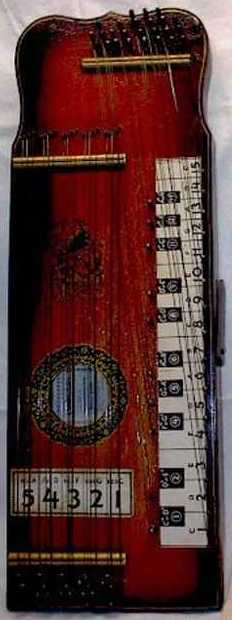
Form 1
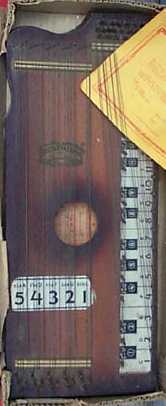
Form 2a
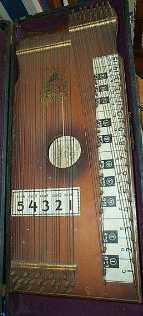
Form 2b
Pianolin - Pianoette
Here's one of the bowed instruments which seem to be the mainstay of Marx production in their New Troy location. It could be considered the big brother of the Violin-Uke, since it has an additional chord and a completely chromatic melody section. It has a miniature representation of a piano keyboard to label the melody notes and support the "piano" portion of the name. Since all the bowed strings are on one side, these instruments have a small pivoting prop to hold that side up off the table so the bow can move more easily. The prop takes two forms - either a small rectangle of wood, held on by a screw, or a triangle of stiff wire, whose end pokes into a hole in the side of the instrument.
There's a wide variety of Pianolins/Pianoettes out there, and they and their names and their accessories create a bit of a haze about the order in which they may have appeared. For instance, the model name, company name, and address appears in various permutations:
It seems likely that they were sold by both names at the same time. As an example, one instrument sold in the mid-1930s showed all of the following:
Was the Mt. Pleasant location merely a distributor for the Marx organization? Even as late as 1948, instruments were sold with a Mt. Pleasant label.
Recent sale prices: Between April 2001 and August 2001, 12 Pianolins/Pianoettes received bids on eBay. The average of the high bids was $36.78. 2 other Pianolins/Pianoettes received no bids.
|
Form 1 |
Form 2a |
Form 2b |
Form 1 has some features not shared by any of the other forms. It is symmetrical at the top, has its soundhole adjacent to about the "5" note on the keyboard label, and has a soundhole decal (one which appeared on many International Musical Corp. and Oscar Schmidt-International instruments). It has the peacock decal seen on a number of Marx instruments, and its soundhole label says "Pianolin".
Form 2 continues to have the accompaniment strings tuned at the opposite end from the melody strings. The soundboard decals shown here are the "Conservatory Quality" decal, seen on many Marx instruments as well as on the Osborn Pianoette, and the peacock decal.
|
Form 3a |
Form 3b |
Form 3c |
Form 3d |
|||
Form 3 has the all the tuning pins on the same end, the soundhole near the "7" note of the melody scale, and the chord label nearer the bottom bridge than form 2. Note the variety of soundboard decals, including the "Pianoette" decal associated with the Osborn Pianoette, and the cut version of the Panama decal (SB115d). Form 3d appears to be the one produced near the end of the company's existence. One example has paperwork from 1963 (and the $65 soundhole label).
Here are some of the soundhole labels. As with the Violin-Uke, some labels include a 4 digit number that looks like a serial number, but is presumably a manufacturing batch number of some sort.
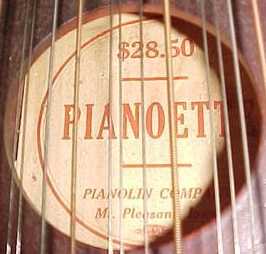
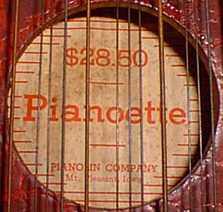
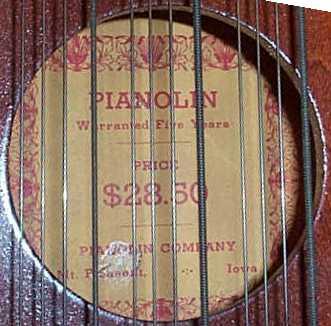
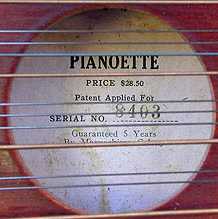
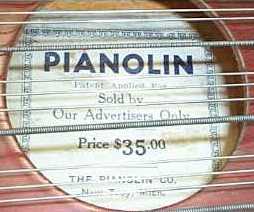
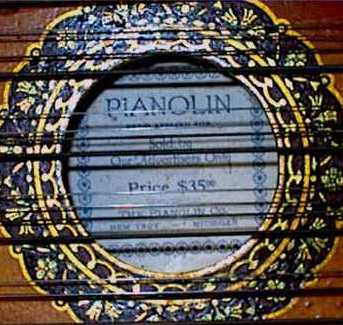
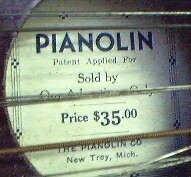
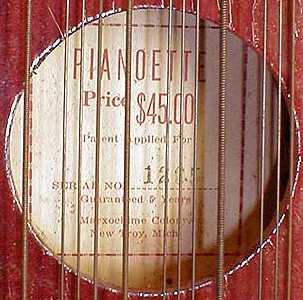
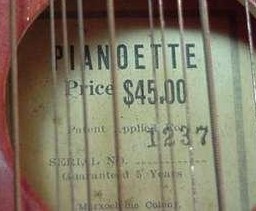
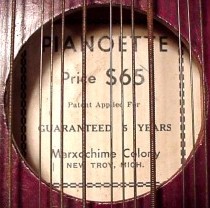
Drop me a line.
Go back to the Guitar-Zither Clearinghouse, or home.
This page was banged out with Word 97, 6 Jan 02.